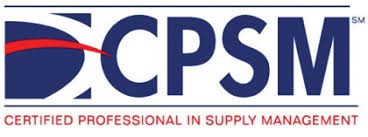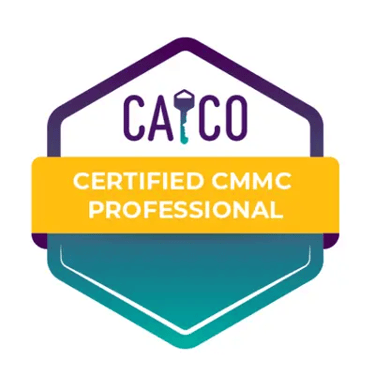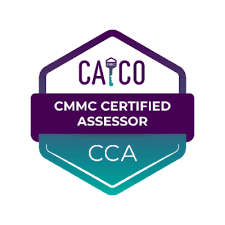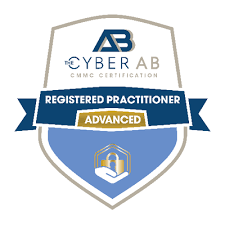How to Create Assessment Ready CMMC Documentation
Luis G. Batista C.P.M., CPSM

CMMC is not only about technical controls. You pass when you can prove that controls are established, documented, practiced, and repeatable. Before drafting a single policy, nail three foundations: precise scope, clear governance, and an honest gap analysis.
Why Documentation Decides CMMC Outcomes
CMMC gets attention for technical controls like MFA and incident response. In practice, pass or fail often hinges on the paper trail. Many companies build secure systems, then treat the System Security Plan and policies as a box to check. That is a mistake. Compliance is not only about having security. It is about proving it with evidence that stands up to an assessment.
The Assessor’s Lens: Establish, Document, Practice, Repeat
Assessors verify that controls are in place, documented correctly, practiced by your team, and repeatable over time. Your goal is to shift your mindset from filling a binder to building an assessment ready documentation system. Every policy, procedure, and artifact should map to traceable evidence. This applies to both Level 1 and Level 2.
Why “Show Me The Live Firewall” Is Not Enough
A live demo is a snapshot. CMMC tests consistency over time. Think of the documentation pyramid:
Policy sets intent. For example, all inbound traffic is blocked unless explicitly allowed.
Procedure defines how. For example, rule changes follow change management and quarterly reviews occur.
Evidence proves it happened. For example, quarterly review sign offs, change tickets, and the active configuration.
Break a link in that chain and you risk a finding. Weak documentation can mean failed assessments, rework, delays, and missed contracts.
The Three Foundations Before You Draft Policy One
1) Define Scope With Precision
You are drawing the boundary around where Federal Contract Information and Controlled Unclassified Information live. Get it wrong and the rest of your program will suffer.
Create network and data flow diagrams that mark systems, users, cloud services, and the exact CUI boundary.
Document enclaves. If CUI lives in a segregated environment, show how controls enforce separation from the corporate network.
List out of scope systems and justify why they never touch CUI.
Define shared responsibility models for every external vendor. State who patches, who monitors, who configures, and who responds to incidents. No ambiguity.
Too wide and you waste time documenting systems that do not matter. Too narrow and you miss systems that handle CUI. Either mistake undermines the assessment.
2) Establish Governance and Accountability
Documentation ages fast. Governance keeps it accurate.
Appoint a CMMC program manager to coordinate owners, reviews, and approvals.
Name domain leads for each control family so subject matter experts review what they own.
Build a document control workflow from draft to SME review to compliance check to executive approval.
Maintain a document control register with title, owner, version, last review date, and next review date. This single artifact proves you manage documents over their life cycle.
Enforce change management. Every update needs an explanation, approval, and an entry in the register.
If your register shows a core policy sat untouched for years, it signals a broken process. CMMC is a maturity model. Repeatability is the standard.
3) Run a Real Gap Analysis and Set a Baseline
Be honest about what you do today. Measure against the NIST SP 800-171A assessment objectives for Level 2 or the Level 1 practices.
Review each control against the assessment objectives. They describe exactly what assessors test.
Record gaps, assign risk, name owners, and set due dates.
Use the results to drive a Plan of Action and Milestones that is a real project plan, not a wish list.
Let the analysis dictate which documents to create or revise and in what order.
Skipping this step leads to policy drafting that does not match reality. The analysis aligns work with risk and keeps your time focused on what matters.
Common Failure Patterns This Approach Prevents
Scope mismatch between your SSP and the real environment
Boilerplate policies that do not reflect actual configurations
Missing or stale evidence that cannot prove repeatability
Documents with no clear owner or review cadence
When the groundwork is in place, an assessor can pull your access control policy, follow the register to its latest review, open the linked procedure, and see screenshots and tickets that match how your team works today. That is strong, defensible proof.
Time Investment You Should Expect
Even small organizations should plan for several hundred labor hours for preparation and documentation. The planning steps above save time by preventing rework. You avoid drafting for the wrong scope and you avoid rewriting documents that never fit operations.
Make It Real, Not Boilerplate
Mandate a review cycle where operational staff validate each technical procedure. Embed proof in the documents. Use screenshots from your systems, sample logs, and real configuration snippets. If a document describes what you should do but not what you actually do, you risk both compliance failure and real liability.
Key Takeaways
Documentation wins or loses the assessment because it proves consistency over time.
Build the pyramid for each control: policy, procedure, evidence.
Do not write policies until you have defined scope, governance, and a gap analysis.
Keep a living document control register and enforce change management.
Use assessment objectives to guide your gap analysis and POA&M.
Validate procedures with the people who do the work and include real artifacts.
CyberComply
+1 (305) 306 - 1800
©2023 Armada Cyber Defense LLC (ACD), DBA CyberComply, ALL RIGHTS RESERVED. ACD is a for profit entity, not associated with the Small Business Development Center (SBDC), Apex Accelerators, Florida International University (FIU), the Small Business Administration (SBA), the Department of Defense, (DOD), or any of their stakeholders
Simplifying CMMC certification for defense contractors through automation and expert guidance.






